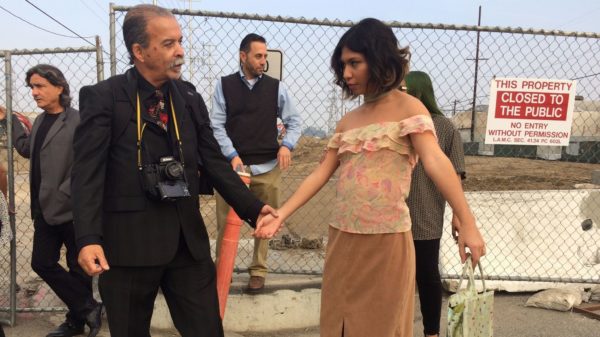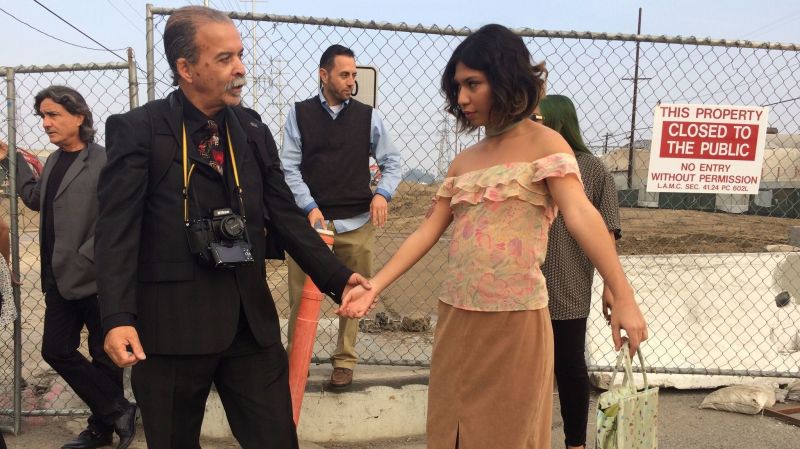
“Vital Signs,” a new performance art series curated by the acclaimed transgender performance artist Cassils, made its debut this Thursday with the work of performance artist and photographer Harry Gamboa Jr. A recipient of a 2017 Guggenheim Fellowship, Cassils holds multiple accolades for their performance art that explores femininity, gender roles and objectification of the female figure. In a time when performance art is being thrown aside as excessively pretentious and self-indulgent, the work of Cassils reminds us of what good performance art really is: captivating, powerful and — most importantly — incredibly self-aware. Gamboa, a Chicano artist based out of Los Angeles, has focused his career on bringing awareness to issues such as fascism, the threats and issues surrounding urbanization and the repression and underrepresentation of Chicano culture. Gamboa was a founding member of ASCO — a word literally meaning “nausea” or “disgust” in Spanish — a Chicano performance art collective that protested against the Vietnam War and explored Chicano issues is east Los Angeles. Gamboa’s work demonstrates the incredible vessel that is the human body in portraying complex issues within society, as well as captivating an audience with visceral emotion and tension.
Gamboa is quite the spectacle. During his ninety minute talk, he cursed like a sailor, gesticulated wildly and frequently remarked on his affinity for painting his eyebrows yellow. Underneath this outlandish personality, however, is an artist with a deep sense of commitment to his community and his culture. Gamboa’s work has spanned decades of tumultuous events – during the proliferation of gang violence in Los Angeles in the 1970s, ASCO staged a photographic series known as “Decoy Body of Gang Warfare.” The artists created fake scenes of gang violence, splaying their bodies across the ground in a grotesque picture of bloodshed. They then mailed these staged pictures out to news organizations and television stations to create commentary around the monetization of the gang violence news coverage. In another display of rebellion against the system, Gamboa spray painted the names of the artists in the collective onto the Los Angeles County Museum of Art’s (LACMA) building. Gamboa proudly refers to the signatures as being the “largest work of Chicano art ever produced.” By spray painting populistic messages onto the building, Gamboa was able to effectively show how institutions such as LACMA have great power of choice in deciding whose art is valid and whose art deserves to be shown.
Gamboa spoke most passionately about his home city of Los Angeles. His most recent collection of work focuses on the demolition of the Sixth Street Bridge in Los Angeles. As Gamboa described his project, he grew more and more animated about the absurdities he found within the city, saying that, “Los Angeles is nothing more than a mirage — nothing is real or permanent. Everything is designed to erase Mexican and Indigenous peoples that habituated here before.” All Los Angeles knows how to do, according to Gamboa, is demolish, then build, then demolish again. In Gamboa’s performance piece on the Sixth Street Bridge, he arranges eclectic actors into various poses across the bridge — some angry, some capturing images with their phones, some in a state of despair. Gamboa is angry — with the ephemeral nature of L.A., with what he perceives as gross gentrification and with the city’s inability to provide for its original Chicano and Mexicano residents. His use of the human body pulls electricity and life into his photographs — it is always striking to see another person literally immersed in a piece.
Performance art, for all its flaws, provides for us the most basic instinct — to see ourselves reflected in art. During “Vital Signs” Gamboa frequently referred to Trump as “the man with the little hands” and related many of his pieces of defiance to contemporary issues within this presidency. As we are struggling to cope with the influx of news every day, the tragedies that seem to flash across our screen with no reprieve, we turn to art for solace. Performance may not be for everyone, but as Gamboa demonstrated, it is a powerful way to turn sorrow and anger into action.
Contact Natalie Sada at nsada ‘at’ stanford.edu.
